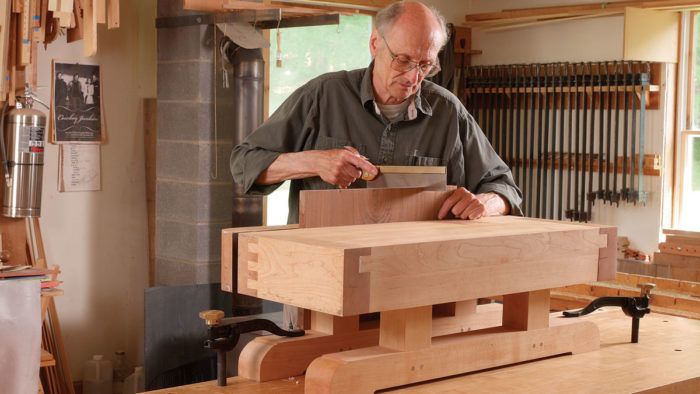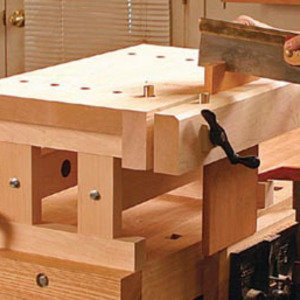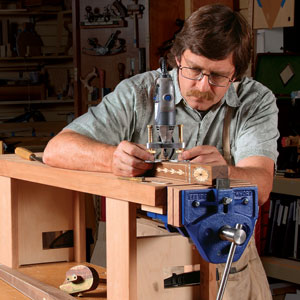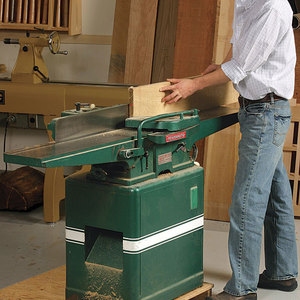Tricks For Working at the Right Height
Optimize the elevation of your workbench for the task at hand
Everybody has an optimum height for their workbench. Standard benches are usually 36 in. tall, but some folks prefer one that’s a bit shorter or taller, depending on their own size. The rule of thumb is that the bench should come up to about your wrist. That’s great for 90% of all bench work, but it’s not perfect for every operation. For example, planing requires more upper body strength, so a lower bench is better. Jobs like carving or sawing dovetails are both easier on your back if the bench is higher.
I have two methods for making my bench higher or lower, and as a result more user-friendly. With a little up-front work, both are quick to implement. I have a platform that lives under the bench that I can pull out and stand on in a minute. I also have an auxiliary bench that I keep close at hand; when I want to do some high work I simply lift it up, clamp it in place, and get to it.
Both add-ons to my main bench have made me a more comfortable and efficient woodworker.
My workbench is 39 in. tall, which is great for the vast majority of my work, even a lot of planing tasks. However, when I need to plane or flatten an entire panel or when I want to sand or plane tabletops or large panels held vertically in the vise, a lower bench surface would really help. Since I can’t make my bench lower, I keep a 2-3⁄4-in. platform under it, fitted between the legs. I pull it out and stand on it, giving me a work surface that’s effectively 36-1⁄4 in. high. If that’s still too high, the platform has two hinged 3-in.-wide boards underneath that I can brace open with long spinners. Fold them down and the bench is 35 in. high, and I can really get into my work.
Making a higher work surface can be more complex, but it’s worth the effort since it greatly improves the ergonomics of sawing tails and pins for case sides, and of letter carving. Unlike planing, which usually takes 5 to 10 minutes, carving can last for hours. Spending that much time hunched over is tough on your back. The high surface is also useful for fussy jobs such as inlay, where you need to be close to the work.
I have a 12-in.-high auxiliary bench that I clamp to my workbench. Its top surface is 51 in. off the floor, so I can rest my arms comfortably on it, and it is perfect for carving. No more backaches. The front edge has a 24-in. Lie-Nielsen chain-driven vise. That makes it easy to clamp case sides for sawing dovetails.
For the full article, download the PDF below:
More on FineWoodworking.com:
- A Benchtop Bench – For routing and handwork, this minibench raises the action to a comfortable height
- Using a Benchtop Bench – See how to use Jeff Miller’s unique minibench for routing and handwork
- Low Assembly Bench – Versatile platform puts your work at the right height






















Log in or create an account to post a comment.
Sign up Log in